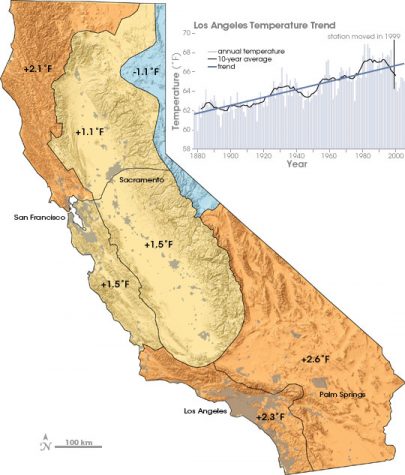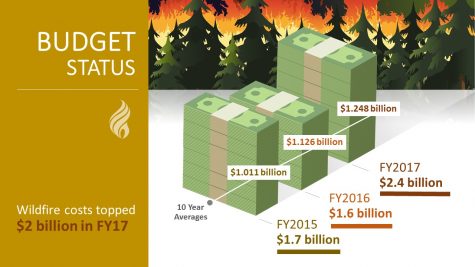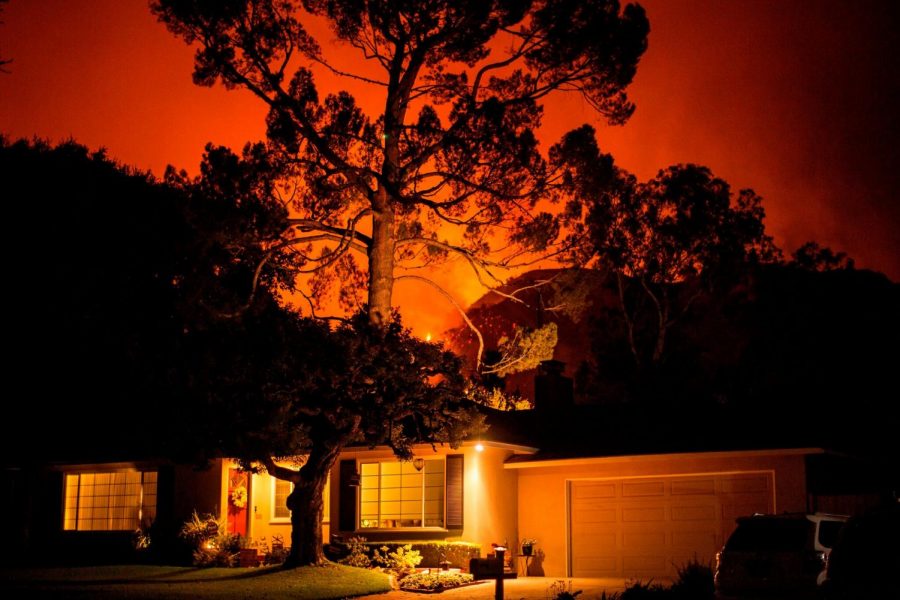Pay close attention to California’s climate crisis
Josh Edelson, Getty Images (adapted)
A firefighter battling flames in a California forest, the landscape is destroyed from the 2020 wildfire season.
Living in Michigan, what can be expected besides the predictable unpredictability of lake-effect snow and just overall average weather conditions? However, for places such as California, this is simply not the case in the wildfire season.
No matter how it is put, there’s simply no denying the already 5 million acres of land ravaged to utter, apocalyptic ruin this time. Even more, the fire season still has months to go in the west, with no relief in sight. Going off of the especially disastrous 2018 wildfire season, 2020 has already surpassed the devastation—making this a record year.
Looking solely at the individual situation of the state, California’s climate of rainy winters to dry summers (leading to dried out vegetation) works in a dangerous level of harmony with winds of the wildfire season.

Rising seasonal temperatures in California over the years [right], as well as overall climate change, are also why it is only going to get worse from here. And, as fire officials continually repress the flames as the human population takes over more and more of nature, California forests are experiencing an unhealthy amount of overgrowth which is only adding more to the mess.
Unbeknownst to many, wildfires (such as ones even to the magnitude that California experiences) are natural, no matter how cruel and uninviting the flames may seem. All that onlookers may see of these infernos is the picture of havoc and disruption that mainstream media paints; however, if it is examined deeper, the brush in the California countryside is simply too thick for the landscape to sustain. By doing this, all we are accomplishing is creating more problems in the future as nature overtakes the area.
In other words, all this vegetation, especially through the dry season, is simply itching to be sparked by a passerby or the rare lightning strike. California is a ticking time bomb until we choose to shift funding towards mitigating the state of our nation’s climate.

The United States Forest Service (U.S.F.S.) has shifted its focus, and budget, within the past 10 years to firefighting rather than restoration projects [right]. The idea of restoration, however, acknowledges that clear-cutting is damaging, but not cutting (or “thinning”) our forests whatsoever can be even more dangerous than the former. None of these vital steps are possible until the U.S.F.S. shifts partially—if not the majority—of their budget towards the maintenance of forests.
Shifting the focus back to our home, Michigan residents awoke to a smokey, pink-tinted sky on the morning of Tuesday, September 15, 2020. While citizens may have acknowledged this sunrise as particularly beautiful or breathtaking, the sad reality is that this a minuscule glimpse into the horrifying reality of the west’s current air quality; yes, it was smoke blown across the continent into our “Pure Michigan” air.
Although said smoke was too high in the atmosphere to affect our air quality the other morning, it was, however, a reminder of the looming and impending effects of climate change for everyone.

Kelsey Dantuma is a senior entering her third and final year on staff for The Central Trend. In all honesty, Kelsey has found a home through writing for...





























































































Lisa Dantuma • Sep 20, 2020 at 3:44 pm
Excellent article sweetie!!